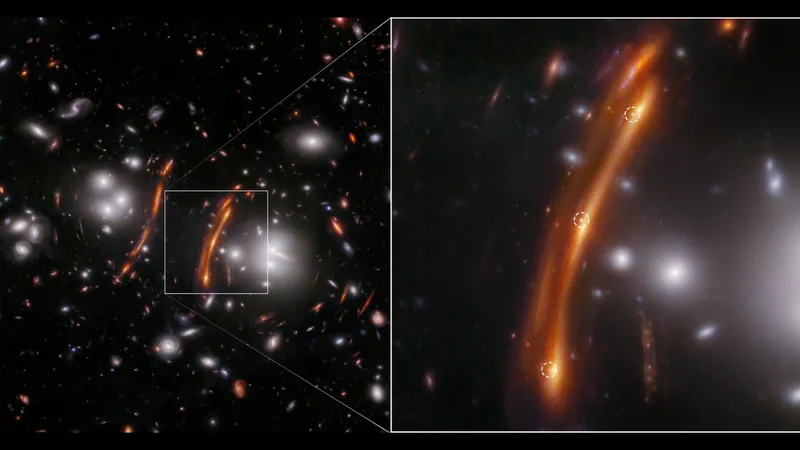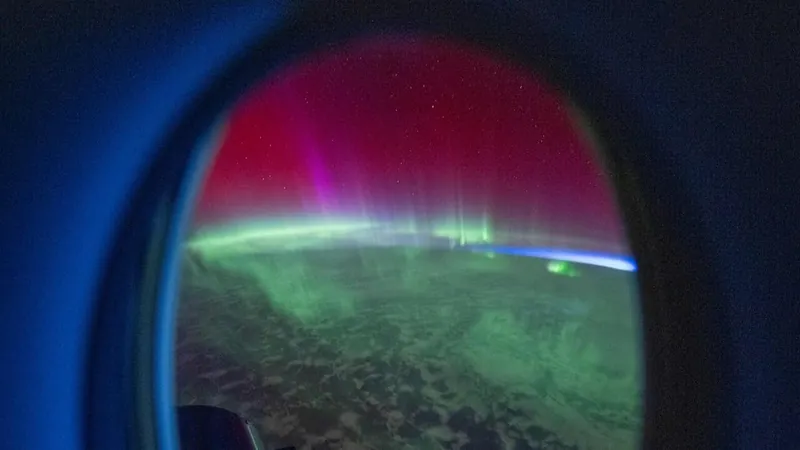
Supernova "Hope" Discovered by the James Webb Space Telescope May Solve the Hubble Tension
2024-10-03
Author: Siti
Introduction
Astronomers using the advanced James Webb Space Telescope (JWST) have unveiled a breathtaking image of a distant supernova, aptly named "supernova Hope." This incredible cosmic event is not only visually stunning but could also hold the key to resolving a significant debate in cosmology known as the "Hubble tension."
Understanding Hubble Tension
The Hubble tension refers to the ongoing disagreement among scientists regarding the rate at which the universe is expanding, a value represented by the Hubble constant. This constant is determined through two primary methods: measuring the expansion rate of the nearby universe and calculating it from observations of the early universe. Unfortunately, these two approaches have produced conflicting results, leaving astronomers puzzled.
The Significance of Supernova Hope
Supernova Hope, which erupted approximately 10.3 billion years ago—when the universe was just 3.5 billion years old—could potentially bridge the gap between these two methods. "The observation of supernova Hope gives us hope for a clearer understanding of the universe's expansion rate," said Brenda Frye, the study team leader and a researcher at the University of Arizona.
Discovery of Supernova Hope
The discovery of the supernova began when Frye and her international team noticed unexpected points of light in a JWST image of the galaxy cluster PLCK G165.7+67.0, or G165. These points, invisible in earlier Hubble images from 2015, turned out to correspond to a supernova with unique characteristics.
Starburst Region and Supernova Characteristics
This region of space is currently undergoing an intense period of star formation known as a "starburst," generating an astounding 300 solar masses of stars each year. Such prolific star formation is typically associated with increased instances of supernova occurrences.
Type Ia Supernova and Its Importance
Supernova Hope is classified as a Type Ia supernova, which results from a binary system consisting of a sun-like star and a white dwarf that has exhausted its nuclear fuel. If the two stars are close enough, the white dwarf siphons material from its companion, eventually triggering a thermonuclear explosion. Type Ia supernovas are particularly valuable to astronomers as they provide consistent luminosity, enabling precise distance measurements across the cosmos.
Calculating the Hubble Constant
Frye explains that understanding Type Ia supernovas' distances is critical for calculating the Hubble constant. And now, with supernova Hope acting as a potential intermediary, astronomers hope to pinpoint the expansion rate with greater accuracy.
Gravitational Lensing Effect
The gravitational lensing effect, a phenomenon predicted by Albert Einstein’s theory of general relativity, plays a pivotal role in this discovery. As light from supernova Hope journeys through space, it is bent by the gravitational influence of the G165 galaxy cluster, creating multiple images of the supernova, each appearing at different times. This effect provides researchers with unique data to derive the value of the Hubble constant.
Significant Findings
After confirming supernova Hope's properties and age using both JWST and ground-based telescopes in Arizona, the team found that the data obtained aligns with measurements made from nearby Type Ia supernovas, yet remains inconsistent with earlier measurements from the universe's youth.
Conclusion
The team’s research is currently undergoing peer review, and as they prepare for subsequent JWST observation cycles, hopes are high that they will further clarify the mysteries surrounding the universe’s expansion, potentially bringing us closer to resolving the Hubble tension.
In a time when questions about our universe's fate loom large, supernova Hope symbolizes not only astronomical wonder but also the relentless quest for knowledge that could reshape our understanding of the cosmos. Keep your eyes on the stars; this journey is just beginning!



 Brasil (PT)
Brasil (PT)
 Canada (EN)
Canada (EN)
 Chile (ES)
Chile (ES)
 España (ES)
España (ES)
 France (FR)
France (FR)
 Hong Kong (EN)
Hong Kong (EN)
 Italia (IT)
Italia (IT)
 日本 (JA)
日本 (JA)
 Magyarország (HU)
Magyarország (HU)
 Norge (NO)
Norge (NO)
 Polska (PL)
Polska (PL)
 Schweiz (DE)
Schweiz (DE)
 Singapore (EN)
Singapore (EN)
 Sverige (SV)
Sverige (SV)
 Suomi (FI)
Suomi (FI)
 Türkiye (TR)
Türkiye (TR)